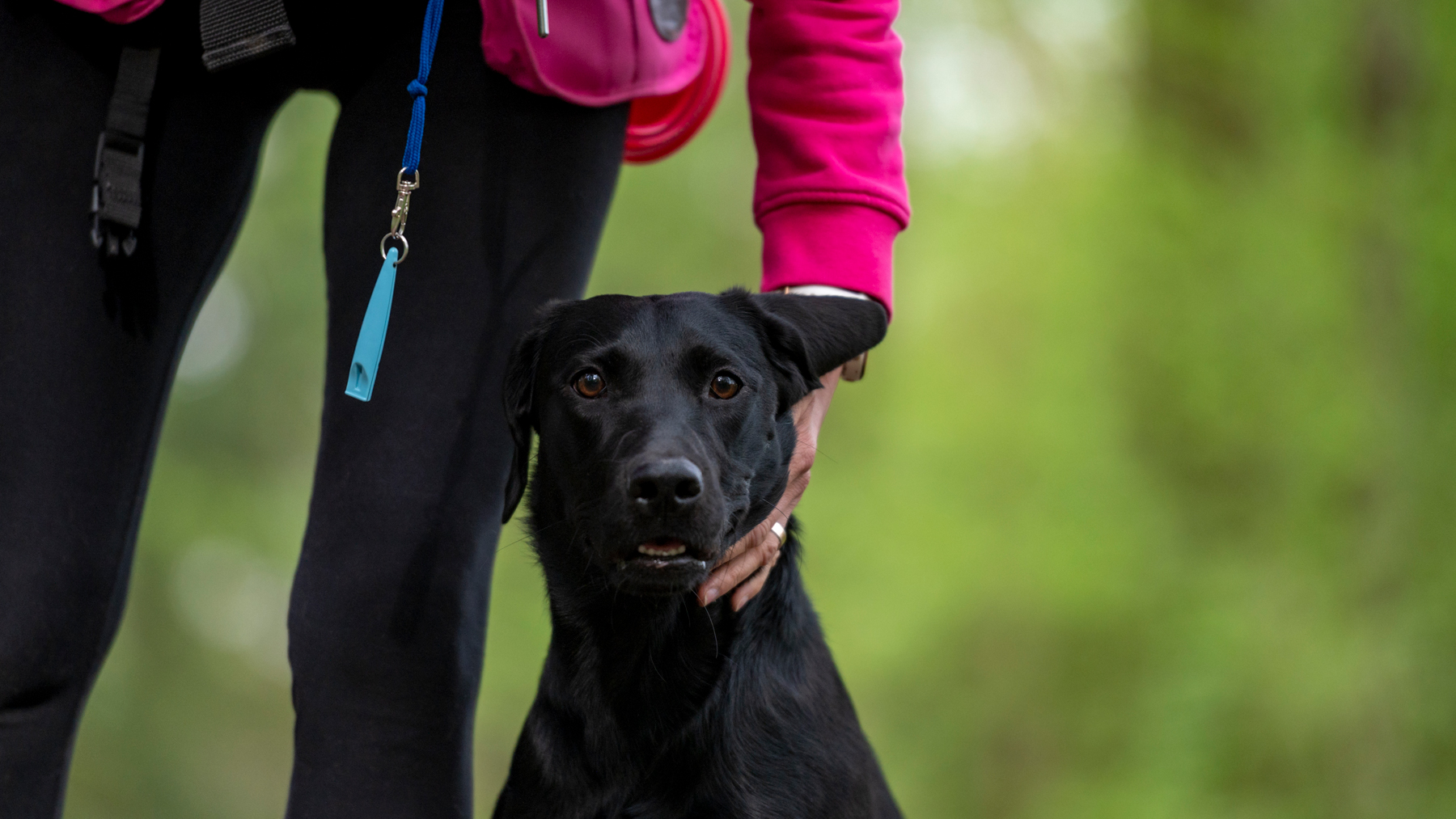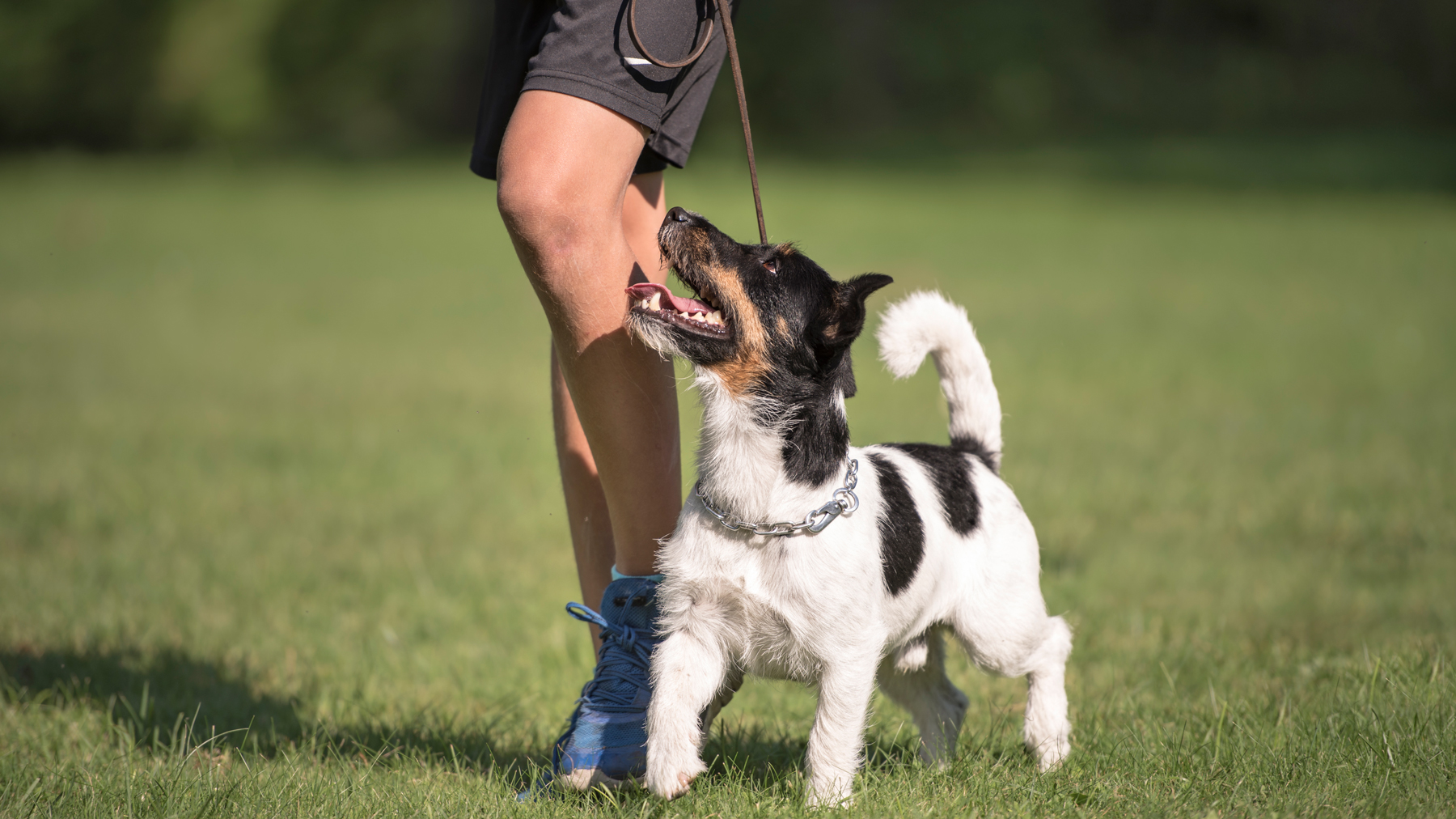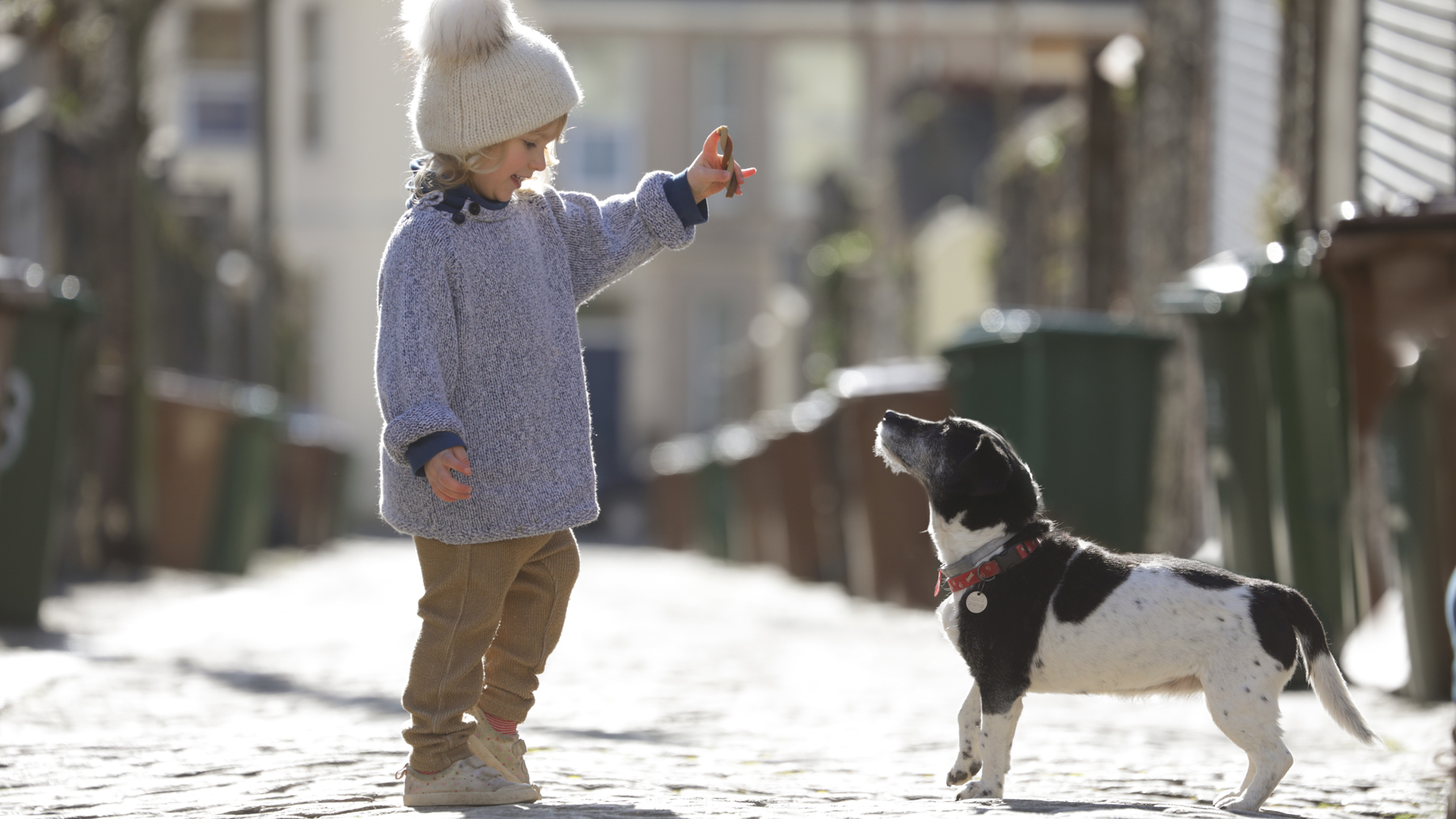
If you're not enjoying your daily dog walks, you might want to learn how to teach your dog to heel. This basic command is often overlooked, but getting it right can help owners transform their walks from a stressful, and sometimes dangerous, chore into an enjoyable bonding experience they actively look forward to.
But what exactly is it? Teaching 'to heel' simply means teaching your dog the position they should walk in. It often gets neglected, as it’s not the most exciting skill to teach. However, it’s a fundamental command that will underpin all of your outings together. Teach it right and you’ll be able to take your dog anywhere. Well, within reason!
We spoke with Wendy Kruger, Dog Behavior and Training Specialist at Woodgreen Pets Charity, about how to teach a dog to heel and common mistakes to avoid. If this is something you want to perfect with your pooch, read our guide, stock up on the best dog treats and get training…
What does heel mean?
Calmer walks sound great - but what exactly does ‘to heel’ mean?
“In dog training, ‘to heel’ refers to the position a dog should maintain while walking calmly alongside their owner or handler. This term has historical roots with working dogs,” explains Kruger.
The position itself is fairly specific. “The dog should walk with their shoulder no further forward than where the walker’s knee would be as they step along. Nowadays, in training classes, ‘heel’ is often called ‘loose leash walking’.” Essentially, teaching your dog to heel is what enables loose leash walking.
Not putting in the correct foundations when teaching heel is considered one of the most common loose leash walking mistakes by trainers so it’s a good thing you’ve landed here.
Why should you teach your dog to heel?
If you want to lay the groundwork for many a happy, stress-free walk, you’ll want to teach your dog to heel. “While loose leash walking might not be the most impressive trick to teach your dog, it's one of the most useful and makes for simple, stress-free outings together,” says Kruger.
Not only does it mean you’ll enjoy your actual walks together more, but you can also involve your dog in more day-to-day life. “Loose leash walking means you can include your dog in everyday activities like walking with children, pushing a stroller, or carrying a bag,” says Kruger.
Considering expanding the pack? Teaching to heel is a must. “It even makes managing a second dog easier. You'll feel at ease joining other dog walkers and navigating busier places with dogs and pedestrians,” she adds.
Teaching to heel will also simultaneously improve your relationship with your dog and help them avoid accidents or health issues down the line. “Training a dog to walk nicely is an important part of building a positive relationship. A dog that pulls strongly can be stressful and potentially dangerous, as they can get loose or cause accidents/injuries,” says Kruger.
Constantly pulling can also result in health issues. “Dogs walked with leads attached to their collars are also at risk of neck damage due to their pulling, resulting in lasting damage and ongoing pain,” explains Kruger.

How to teach a dog to heel
Sounds great! So how do you go about teaching it? We asked Kruger for her top tips on how to successfully teach a dog to heel and here’s her recipe for success…
1. Think about reinforcement
Before you even start, think about what behavior you are currently reinforcing. “It’s good to have a think about what’s reinforcing for your dog – a dog who enjoys the park will be keen to get there quickly,” explains Kruger. So what does reinforcing that behavior look like? “By stepping forward when they pull, you will unintentionally reinforce their pulling,” she says.
The answer isn’t to start pulling back . “Yanking them back or getting cross will have little short-term effect, and no positive long-term effect at all – it may also damage your relationship a little,” Kruger adds. So what do you do?
2. Be boring (occasionally)
We get it. The beach, dog park, woodland is fun. Lapping your block is not. But sometimes, being boring is the best bet. Especially when you’re just starting out with this command.
“Different walking routes can help, as well as some more ‘boring’ walks. Taking your dog on some uneventful, calm road walks with no interaction with dogs or people can help them relax, as they won’t be getting overly excited every single time you go out. These routes are excellent for starting loose leash training, as your dog will be more focused and responsive if they aren’t distracted,” says Kruger.
3. Reward the behavior
The key to getting your dog to heel? Perfectly timed rewards. “The most important thing to learn is to reward your dog when the leash is loose. You can either do this by only stepping forward when it's loose, giving them a treat at exactly the moment the lead is loose, or using reinforcing language and giving them a fuss,” explains Kruger. “The first two options will have a quicker effect as they mark the moment better, so the dog can pair the behavior with the reward more quickly.”
Don’t be put off trying other methods such as clicker training for dogs, which is another good way to mark good behavior. Experimenting while you set the right foundations is perfectly normal and sometimes trial and error is the best way to learn.
4. Take a class
If you’re still struggling, consider taking a class. “Most puppy and adult training classes will include loose leash walking. Classes are an excellent place to learn this incredibly valuable skill – whether you’re starting with a puppy, or an older dog who’s been pulling you along for years,” explains Kruger.
Or you could look into gaining some 1:1 help from a professional. Don’t miss our guide on how to spot dog trainer red flags and ensure you pick a suitable trainer who can safely and effectively help you and your canine.

Common heel training mistakes
Keen to get your pup walking to heel? Avoid these common pitfalls...
- Not using positive reinforcement: Avoid reactive pulling and instead use positive training methods to encourage teaching to heel. “Reward your dog with treats and praise when they walk calmly by your side,” says Kruger.
- Inappropriate equipment: If you’ve got a dog that loves to pull, it might be worth ditching the traditional collar lead. “Consider using a front-clip harness or a head halter to discourage pulling and prevent neck strain,” advises. Kruger.
- Inconsistent training: This is not a command you want to be slack with! “Be consistent in your training efforts. Practice regularly and be patient with your dog's progress,” says Kruger.
- Too many distractions: If your normal routes are full of tempting distractions (people, other dogs, too many scents) you might want to opt for some comparatively boring routes for a little while. “Start training in a quiet environment and gradually introduce distractions to reinforce focus and good behavior,” suggests Kruger.
- Punishment: “Avoid punishment-based methods, as they can create fear and worsen the problem,” warns Kruger.
So there you have it - how to teach your dog to heel! Learning this fundamental skill will help you and your dog to enjoy your walks together. Not only will it upgrade your walks, but it’ll also prove invaluable if you want to involve your dog in more day-to-day activities, as well as if you eventually get another dog.







